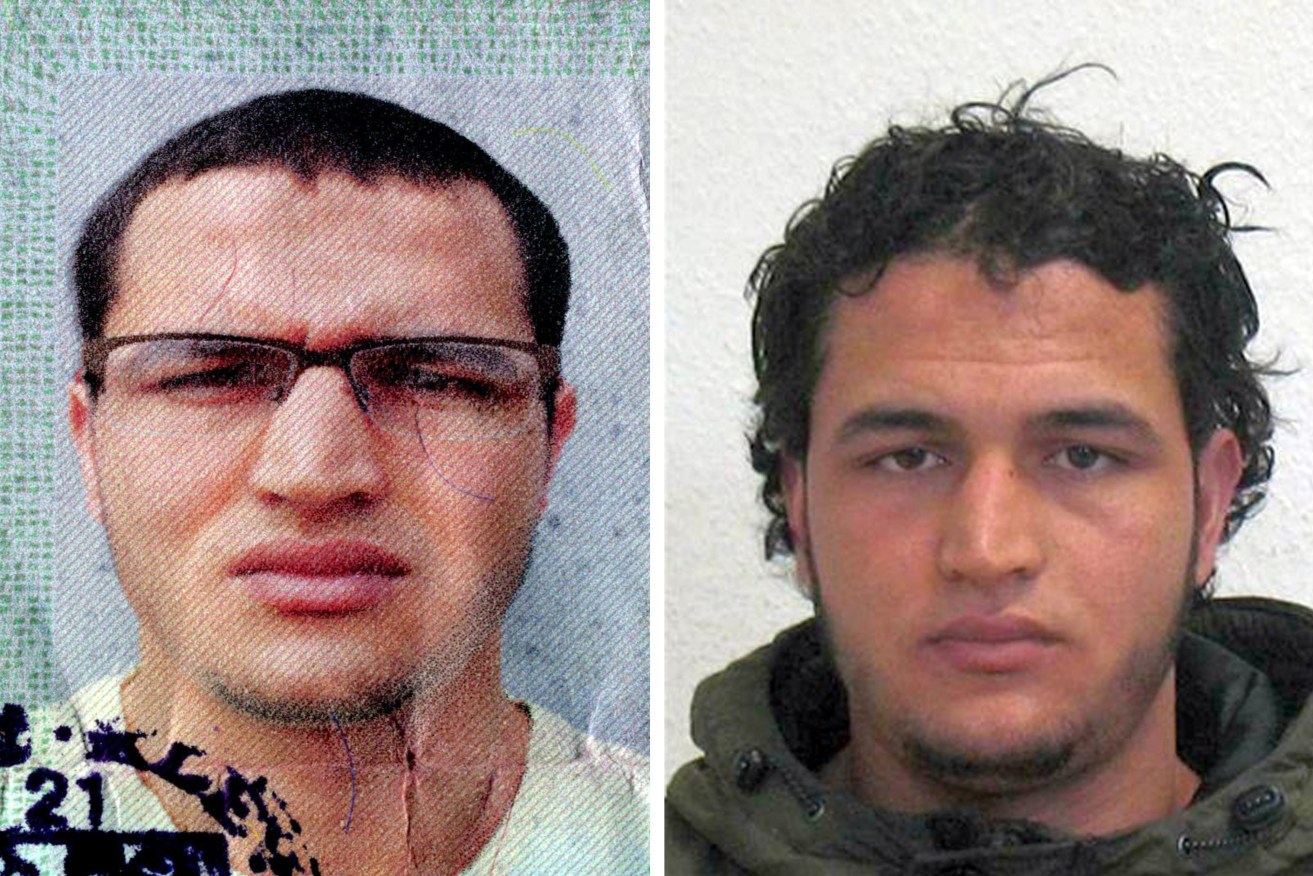Manhunt for Tunisian over Berlin attack
German police are searching for an asylum-seeker from Tunisia after finding an identity document under the driver’s seat of a truck that ploughed into a Berlin Christmas market killing 12 people.

A composite photo of suspect Anis Amri. Photo: EPA/BKA/Supplied
The federal prosecutor’s office on Wednesday offered a reward of up to 100,000 euros ($A144,868) for information leading to the capture of the suspect has been identified as 24-year-old Anis Amri.
“Beware: He could be violent and armed!” the prosecutor’s office said in a statement, which described Amri as 1.78 metres tall, with black hair and brown eyes.
Amri’s father and security sources told Tunisia’s Radio Mosaique that he had left Tunisia seven years ago as an illegal immigrant and had spent time in prison in Italy.
In Duesseldorf, Ralf Jaeger, interior minister of the western state of North Rhine-Westphalia (NRW), said the Tunisian appeared to have arrived in Germany in July 2015 and his asylum application had been rejected.
He seemed to have used different names and had been identified by security agencies as being in contact with an Islamist network. He had mainly lived in Berlin since February, but was recently in NRW, Jaeger added.
After being turned down for asylum, the man should have been deported but could not be returned to Tunisia because his documents were missing, he said.
“Tunisia at first denied that this person was its citizen,” said Jaeger, adding that German authorities started the process of getting new identity papers in August 2016. “The papers weren’t issued for a long time. They arrived today.”
A judicial source told Reuters that German authorities had observed Amri this year to determine whether he was planning a robbery to fund the purchase of automatic weapons for a possible attack with accomplices but the monitoring was stopped because authorities were unable to prove their suspicions.
The new details have added to a growing list of questions about whether security forces missed opportunities to prevent the attack, in which a 25-tonne truck mowed down shoppers and smashed through wooden huts selling gifts, mulled wine and sausages in the deadliest attack on German soil since 1980.
Christmas markets have been a known potential target for Islamist militants since at least 2000 and the modus operandi in Berlin was identical to that of a Bastille Day attack in France in July, when a Tunisian-born man rammed a lorry through a seaside crowd in Nice killing 86 people.
The market at the scene of Monday’s attack, at the foot of the Kaiser Wilhelm memorial church, stayed shut on Wednesday, but more than 60 other Christmas markets across the German capital re-opened under tightened security.
“We don’t want to let the terrorists win. If everyone stays away, they are winning,” said tourist Nicki Anning at the Gendarmenmarkt Square in central Berlin.
Berlin authorities said 12 people seriously injured in Monday’s attack were still being treated in hospital.
The pre-Christmas carnage at a symbolic site – under the ruined spire of a church bombed in World War Two – has shocked Germans and prompted security reviews across Europe.
The possible – though unproven – involvement of a migrant or refugee has revived a bitter debate about security and immigration, with Chancellor Angela Merkel facing calls to clamp down after allowing more than a million newcomers into Germany in the past two years.
US President-elect Donald Trump condemned the attack blaming “Islamist terrorists (who) continually slaughter Christians in their communities and places of worship as part of their global jihad”.
Reuters




